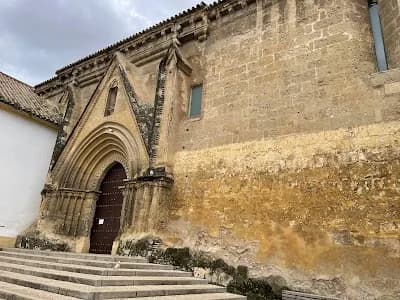
St. Flora
The Martyr of Unwavering Faith
"In nature, I see God's love."
Saint Facts
- Origin:
- Italy
- Gender:
- Female
- Vocation:
- Unknown
- Birth:
- Unknown
- Feast Day:
- Nov 24
- Death:
- Unknown
Saint Details
St. Flora lived during the ninth century in Córdoba, Spain, a city under the reign of the Muslim Caliph Abd ar-Rahman II. Born to a Muslim father and a Christian mother, Flora was raised in the Christian faith after her father's death. Her brother, a devout Muslim, pressured her to convert to Islam, but she refused, leading to a tumultuous relationship. Flora sought refuge in a church, where she consecrated her virginity to God. She met Maria, another Christian woman, and together they decided to publicly declare their faith, knowing it would lead to martyrdom. Despite being imprisoned, tortured, and tempted with threats of being sold into prostitution, Flora remained steadfast in her beliefs. She and Maria were ultimately beheaded on November 24, 851. Their martyrdom was documented by Eulogius of Córdoba, who described their courage as inspiring other Christians to follow in their footsteps. Over time, Flora's devotion and martyrdom led to her recognition as a saint by the Roman Catholic Church. Although the exact date of her canonization is not recorded, she is revered as a symbol of faith and perseverance, especially among those who have experienced betrayal and persecution. St. Flora is venerated as a patron saint of the abandoned, victims of betrayal, converts, martyrs, and single laywomen, her feast day commemorated on November 24.
Associated Holy Sites

Basilica di San Lorenzo
Piazza di San Lorenzo, 9, 50123 Firenze FI, Italy

Royal Church of Santa Marina de Aguas Santas
Pl. de Sta. Marina, 6, Centro, 14001 Córdoba, Spain

Chiesa Evangelica Valdese
Via dei Mille, 4, 25122 Brescia BS, Italy
Details for: Basilica di San Lorenzo
The Basilica di San Lorenzo in Florence holds immense religious significance as the burial place of Saint Lawrence, a prominent early Christian martyr. Pilgrims journey to this site to venerate the saint and connect with his legacy of faith and sacrifice. The basilica's importance stems from its historical association with Lawrence and its role as a significant center of Florentine Catholic life for centuries. Its rich history and sacred relics draw countless visitors seeking spiritual enrichment and a tangible link to a pivotal figure in Christian history. The basilica offers a powerful space for reflection and prayer, providing a profound experience for those on a pilgrimage seeking spiritual connection. Its enduring status as a sacred site underscores its continued importance to the Catholic faith.
🙏 No spam. Just grace. Unsubscribe anytime.